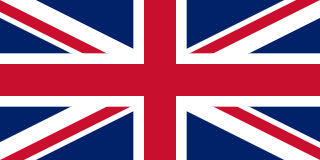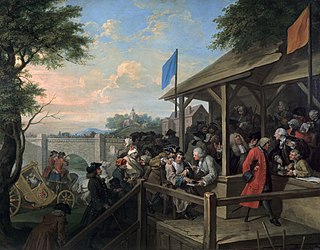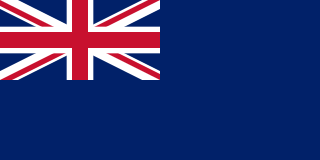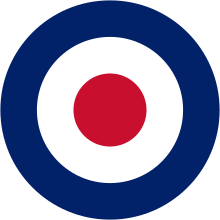
A flag is a piece of fabric with a distinctive design and colours. It is used as a symbol, a signalling device, or for decoration. The term flag is also used to refer to the graphic design employed, and flags have evolved into a general tool for rudimentary signalling and identification, especially in environments where communication is challenging. Many flags fall into groups of similar designs called flag families. The study of flags is known as "vexillology" from the Latin vexillum, meaning "flag" or "banner".

A national flag is a flag that represents and symbolizes a given nation. It is flown by the government of that nation, but can also be flown by its citizens. A national flag is typically designed with specific meanings for its colours and symbols, which may also be used separately from the flag as a symbol of the nation. The design of a national flag is sometimes altered after the occurrence of important historical events. The burning or destruction of a national flag is a greatly symbolic act.

The Union Jack, or Union Flag, is the de facto national flag of the United Kingdom. The Union Flag was also used as the official flag of several British colonies and dominions before they adopted their own national flags. The flag continues to have official status in Canada, by parliamentary resolution, where it is known as the Royal Union Flag.

The flag of Scotland is the national flag of Scotland, which consists of a white saltire defacing a blue field. The Saltire, rather than the Royal Standard of Scotland, is the correct flag for all private individuals and corporate bodies to fly. It is also, where possible, flown from Scottish Government buildings every day from 8:00 am until sunset, with certain exceptions.
National colours are frequently part of a country's set of national symbols. Many states and nations have formally adopted a set of colours as their official "national colours" while others have de facto national colours that have become well known through popular use. National colours often appear on a variety of different media, from the nation's flag to the colours used in sports. Before World War I, they also served as the colours of different military uniforms for each nation or region.

In British maritime law and custom, an ensign is the identifying flag flown to designate a British ship, either military or civilian. Such flags display the United Kingdom Union Flag in the canton, with either a red, white or blue field, dependent on whether the vessel is civilian, naval, or in a special category. These are known as the red, white, and blue ensigns respectively.

The national flag of the United Kingdom is the Union Jack, also known as the Union Flag.

Political colours are colours used to represent a political ideology, movement or party, either officially or unofficially. They represent the intersection of colour symbolism and political symbolism. Politicians making public appearances will often identify themselves by wearing rosettes, flowers, ties or ribbons in the colour of their political party. Parties in different countries with similar ideologies sometimes use similar colours. As an example the colour red symbolises left-wing ideologies in many countries, while the colour blue is often used for conservatism, the colour yellow is most commonly associated with liberalism and right-libertarianism, and Green politics is named after the ideology's political colour. The political associations of a given colour vary from country to country, and there are exceptions to the general trends, for example red has historically been associated with Christianity, but over time gained association with leftist politics, while the United States differs from other countries in that conservatism is associated with red and liberalism with blue. Mass media has driven a standardization of colour by political party, to simplify messaging, while historically the colour a candidate chose to identify with could have been chosen based on other factors such as family or regional variations.

The Blue Ensign is a flag, one of several British ensigns, used by certain organisations or territories associated or formerly associated with the United Kingdom. It is used either plain or defaced with a badge or other emblem.

The White Ensign, at one time called the St George's Ensign because of the simultaneous existence of a crossless version of the flag, is an ensign worn on British Royal Navy ships and shore establishments. It consists of a red St George's Cross on a white field, identical to the flag of England except with the Union Flag in the upper canton.

In military organizations, the practice of carrying colours, standards, flags, or guidons, both to act as a rallying point for troops and to mark the location of the commander, is thought to have originated in Ancient Egypt some 5,000 years ago. The Roman Empire also made battle standards reading SPQR a part of their vast armies. It was formalized in the armies of Europe in the High Middle Ages, with standards being emblazoned with the commander's coat of arms.
British racing green, or BRG, is a colour similar to Brunswick green, hunter green, forest green or moss green. It takes its name from the green international motor racing colour of the United Kingdom. This originated with the 1903 Gordon Bennett Cup, held in Ireland, as motor-racing on public roads was illegal in Great Britain. As a mark of respect, the British cars were painted shamrock green.

In heraldry and vexillology, fimbriation is the placement of small stripes of contrasting colour around common charges or ordinaries, usually in order for them to stand out from the background, but often simply due to the designer's subjective aesthetic preferences, or for a more technical reason to avoid what would otherwise be a violation of the rule of tincture. While fimbriation almost invariably applies to both or all sides of a charge, there are very unusual examples of fimbriation on one side only. Another rather rare form is double fimbriation, where the charge or ordinary is accompanied by two stripes of colour instead of only one. In cases of double fimbriation the outer colour is blazoned first. The municipal flag of Mozirje, in Slovenia, show an example of fimbriation that itself is fimbriated.

A1 Team Great Britain was the British team of A1 Grand Prix, an international racing series.

Full dress uniform, also known as a ceremonial dress uniform or parade dress uniform, is the most formal type of uniforms used by military, police, fire and other public uniformed services for official parades, ceremonies, and receptions, including private ones such as marriages and funerals. Full dress uniforms typically include full-size orders and medals insignia. Styles tend to originate from 19th century uniforms, although the 20th century saw the adoption of mess dress-styled full-dress uniforms. Designs may depend on regiment or service branch. In Western dress codes, full dress uniform is a permitted supplementary alternative equivalent to the civilian white tie for evening wear or morning dress for day wear – sometimes collectively called full dress – although military uniforms are the same for day and evening wear. As such, full dress uniform is the most formal uniform, followed by the mess dress uniform.

St Patrick's blue is a name often mistakenly applied to several shades of blue associated with Ireland. The official colour of Ireland in heraldic terms is azure blue. The colour blue's association with Saint Patrick dates from the 1780s, when it was adopted as the colour of the Anglo-Irish Order of St Patrick. The term refers to a sky blue used by the Order of St Patrick, often confused in Ireland with a darker, rich blue. There is no de jure national colour in Ireland, with the only reference to any colour(s) appearing in Article 7 of the Irish Constitution in regards to the national flag. However, while green is the de facto national colour of Ireland, representing Ireland in many sporting, cultural, and business events, azure blue is still found in symbols of both the state and the island.

The national colours of Canada are red and white, the former being symbolic of England and the latter of France, the colours having been used representatively by those countries in the past. The maple is one of the national symbols and red is both the first leaf colour after spring budding and the autumn colour of maple leaves. The colours are most prominently evident on the national flag of Canada and it has been said they were declared the country's official colours when King George V proclaimed his Canadian coat of arms in 1921. However, there is no mention of national colours in the proclamation. Similarly, the creation of Queen Elizabeth II's royal standard in 1962 is also considered to be when red and white were unofficially set as the national colours.
The national colours of New Zealand orders include black, white or silver, and red ochre.
Savoy blue or Savoy azure is a shade of saturated blue between peacock blue and periwinkle, lighter than peacock blue. It owes its name to the fact of being the colour of the House of Savoy, a ruling dynasty in the County of Savoy from 1003 to 1416, the Duchy of Savoy from 1416 to 1714, the Kingdom of Piedmont-Sardinia from 1720 to 1861, and the Kingdom of Italy from 1861 to 1946.
















